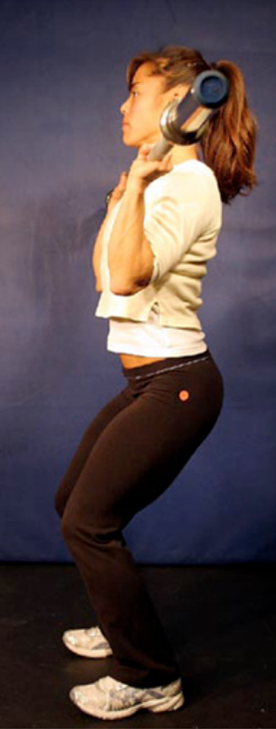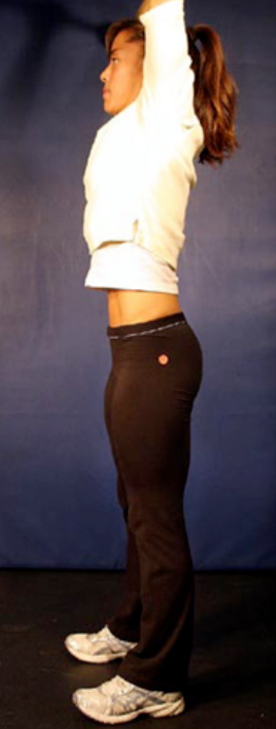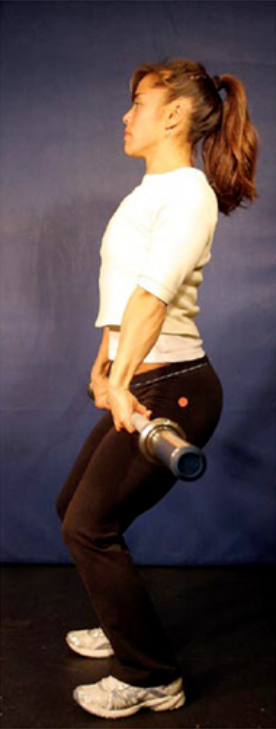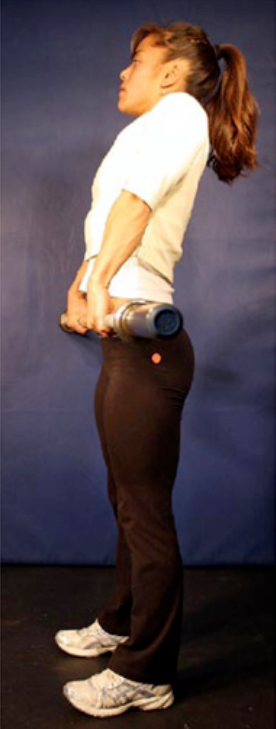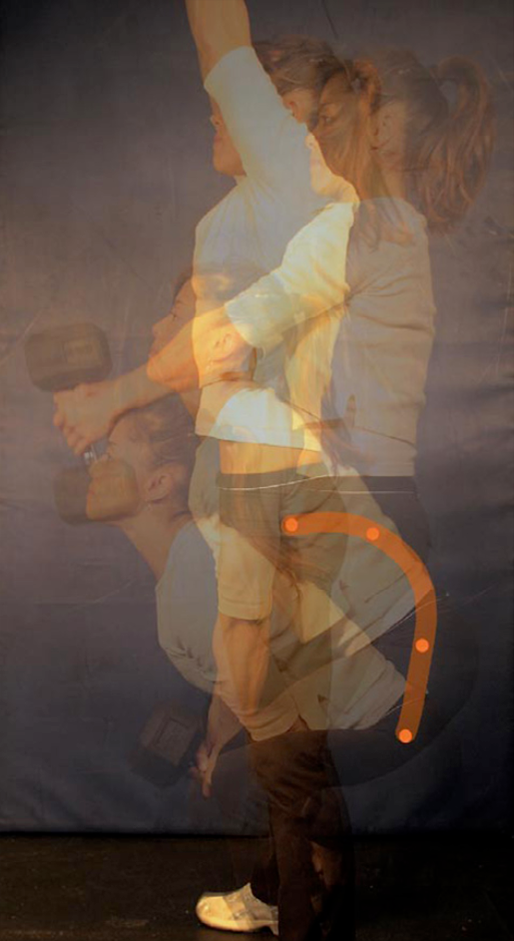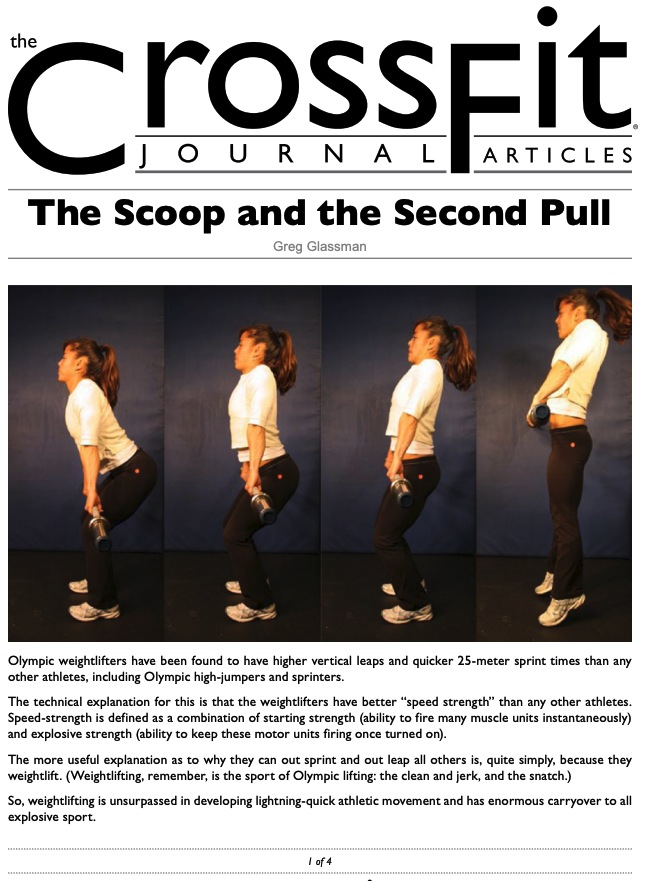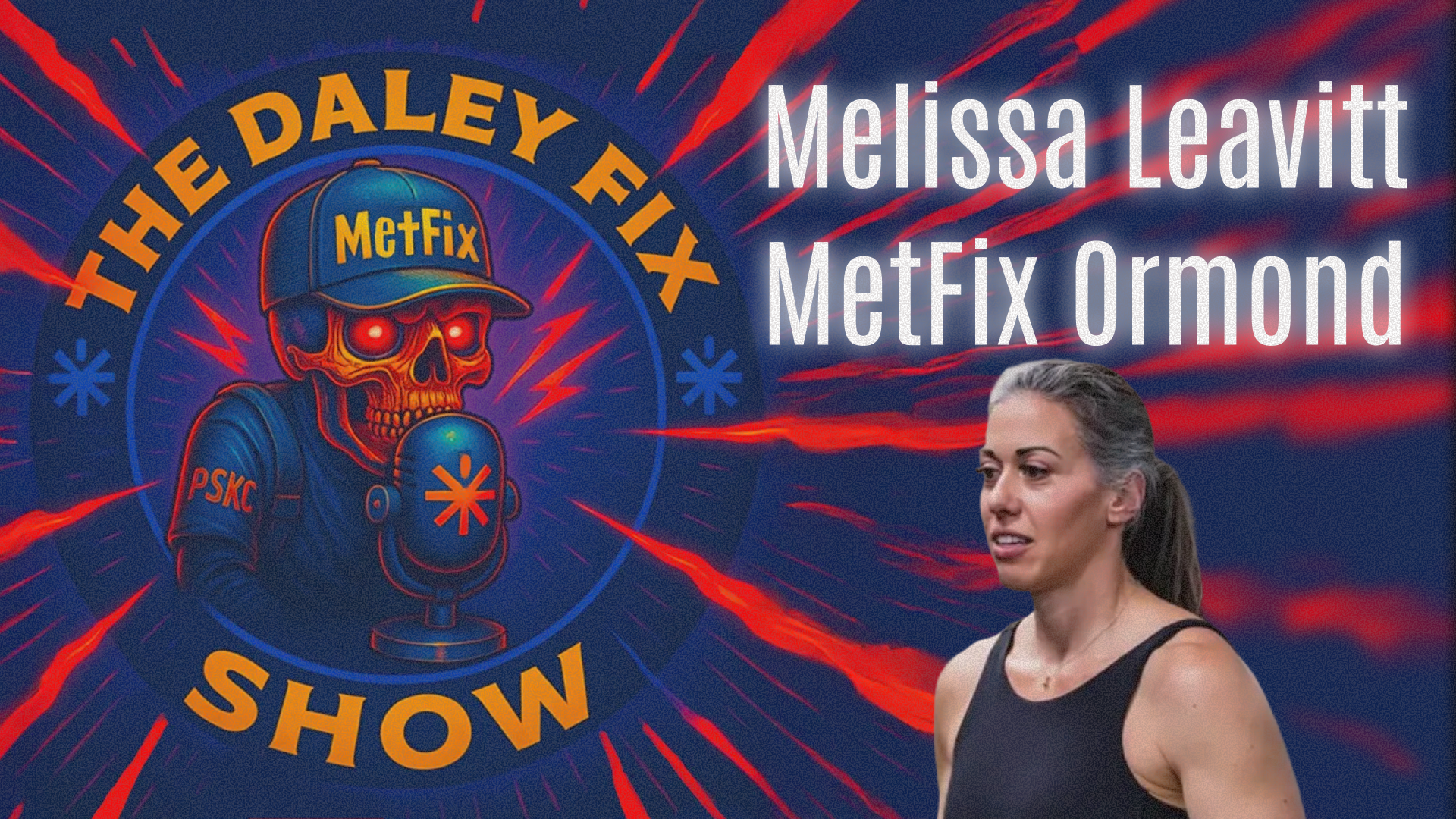Olympic weightlifters have been found to have higher vertical leaps and quicker 25-meter sprint times than any other athletes, including Olympic high-jumpers and sprinters.
The technical explanation for this is that the weightlifters have better “speed strength” than any other athletes. Speed-strength is defined as a combination of starting strength (ability to fire many muscle units instantaneously) and explosive strength (ability to keep these motor units firing once turned on).
The more useful explanation as to why they can out sprint and out leap all others is, quite simply, because they weightlift. (Weightlifting, remember, is the sport of Olympic lifting: the clean and jerk, and the snatch.)
So, weightlifting is unsurpassed in developing lightning-quick athletic movement and has enormous carryover to all explosive sport.
The Olympic lifts are complex compound movements, but we can drill down to one little piece of the lifts that is generating most of the speed strength – the second pull.
The “first pull” of the clean is essentially a deadlift with the shoulders forward of the bar in the setup. As the bar comes off the ground and travels along the shin, the torso’s angle of inclination remains constant.
As the bar passes the knees, the athlete rotates his torso until it is perpendicular to the ground without elevating the bar; this re-bends the knees some and is called the “scoop” or “double knee bend.”
At the instant the torso is perfectly erect, the hips and legs are violently extended. This is the “second pull.” The second pull puts the trajectory of the athlete and bar directly upward.
When the torso is perpendicular, the forces on the spine are entirely compressive and there are essentially no shear forces acting. Only from this posture can we effect maximum hip-leg extension power.
If the second pull were initiated with the torso forward-inclined, the spine may not withstand the shear force of the violent hip and leg extension. It is that powerful.
The second pull is so powerful that without a hook grip, where the thumb is held tightly against the bar by the fingers, the grip cannot be maintained.
The setup of the hip, legs, and torso for the second pull, readied by the scoop, is identical to the bottom position of the dip in the “dip-drive-press” cycle of the push-press or jerk.
We teach the feel and posture for the launch point of the second pull by having the athlete find the bottom of the dip in the push-press and then, without moving anything except the arms, bring the bar down from the shoulders to the hang and back several times to demonstrate the identical hip, leg, and torso position used for both the second pull and the drive of the push-press.
The depth of the dip is determined by finding where the athlete can maximally accelerate the bar on the drive without dropping the chest at all going up or down. This is generally about six to eight inches.
Explosiveness is a learned phenomenon. Speed-strength, being a compilation of speed and power, is developed through both training and practice.
By contrast, coordination, accuracy, agility, and balance are developed through practice alone while cardiorespiratory endurance, stamina, flexibility, and limit strength are developed largely through training.
This has two direct implications. First, when the technique of the scoop and second pull “click” for the athlete, the return in performance can be immediate. Second, absent the precise neurological stimulus required of speed-strength, it will not fully express.
The violent hip-leg extension of the second pull has great application to explosive sport movement, but those sporting movements are not going to develop maximal hip-leg explosiveness.
Only weightlifting can develop this explosiveness due to the unique posture and dynamics of the second pull, though fans of the Swiss Ball, Pilates, and kettlebell training claim otherwise.
The kettlebell exercises (snatch, swing, and clean), while excellent for developing aerobic and anaerobic strength endurance, are inadequate to the task of developing speed strength.
We cannot explosively extend the hip and leg unless the torso is upright. With the kettlebell exercises the torso is upright only after the hips and legs are fully extended. This line of action precludes the explosiveness of the second pull.
The kettlebell movements are really first pulls to full extension – no scoop, no second pull, and limited power.
We must lift heavy (dead, squat, bench) to optimally develop limit strength, and we can use kettlebell training (snatch, swing, clean) to develop aerobic and anaerobic strength endurance, but we must train and practice the Olympic lifts if we want to develop explosiveness.
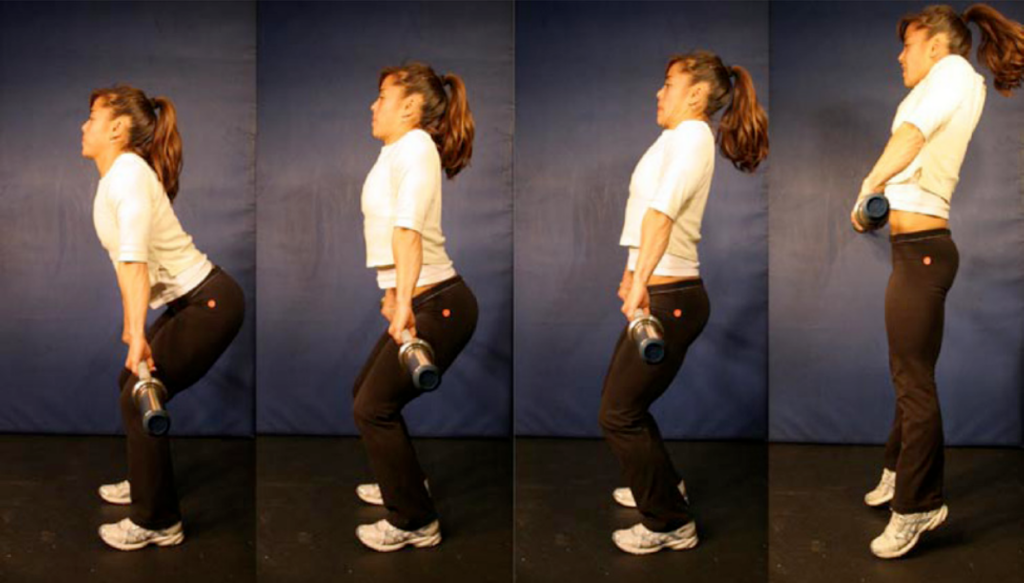
a. Annie rises with a fixed angle of inclination and as she passes the knees…
b. her torso rotates to perpendicular after which she…
c. can violently extend her hips and legs…
d. to triple extension.
This article, by BSI’s co-founder, was originally published in The CrossFit Journal. While Greg Glassman no longer owns CrossFit Inc., his writings and ideas revolutionized the world of fitness, and are reproduced here.
Coach Glassman named his training methodology ‘CrossFit,’ which became a trademarked term owned by CrossFit Inc. In order to preserve his writings in their original form, references to ‘CrossFit’ remain in this article.

Greg Glassman founded CrossFit, a fitness revolution. Under Glassman’s leadership there were around 4 million CrossFitters, 300,000 CrossFit coaches and 15,000 physical locations, known as affiliates, where his prescribed methodology: constantly varied functional movements executed at high intensity, were practiced daily. CrossFit became known as the solution to the world’s greatest problem, chronic illness.
In 2002, he became the first person in exercise physiology to apply a scientific definition to the word fitness. As the son of an aerospace engineer, Glassman learned the principles of science at a young age. Through observations, experimentation, testing, and retesting, Glassman created a program that brought unprecedented results to his clients. He shared his methodology with the world through The CrossFit Journal and in-person seminars. Harvard Business School proclaimed that CrossFit was the world’s fastest growing business.
The business, which challenged conventional business models and financially upset the health and wellness industry, brought plenty of negative attention to Glassman and CrossFit. The company’s low carbohydrate nutrition prescription threatened the sugar industry and led to a series of lawsuits after a peer-reviewed journal falsified data claiming Glassman’s methodology caused injuries. A federal judge called it the biggest case of scientific misconduct and fraud she’d seen in all her years on the bench. After this experience Glassman developed a deep interest in the corruption of modern science for private interests. He launched CrossFit Health which mobilized 20,000 doctors who knew from their experiences with CrossFit that Glassman’s methodology prevented and cured chronic diseases. Glassman networked the doctors, exposed them to researchers in a variety of fields and encouraged them to work together and further support efforts to expose the problems in medicine and work together on preventative measures.
In 2020, Greg sold CrossFit and focused his attention on the broader issues in modern science. He’d learned from his experience in fitness that areas of study without definitions, without ways of measuring and replicating results are ripe for corruption and manipulation.
The Broken Science Initiative, aims to expose and equip anyone interested with the tools to protect themself from the ills of modern medicine and broken science at-large.
Support the Broken Science Initiative.
Subscribe today →
recent posts
Medical Society Webinar with David Wiss

